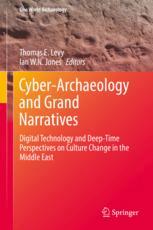

Most ebook files are in PDF format, so you can easily read them using various software such as Foxit Reader or directly on the Google Chrome browser.
Some ebook files are released by publishers in other formats such as .awz, .mobi, .epub, .fb2, etc. You may need to install specific software to read these formats on mobile/PC, such as Calibre.
Please read the tutorial at this link: https://ebookbell.com/faq
We offer FREE conversion to the popular formats you request; however, this may take some time. Therefore, right after payment, please email us, and we will try to provide the service as quickly as possible.
For some exceptional file formats or broken links (if any), please refrain from opening any disputes. Instead, email us first, and we will try to assist within a maximum of 6 hours.
EbookBell Team

0.0
0 reviewsThis volume asks how the current Information Technology Revolution influences archaeological interpretations of techno-social change. Does cyber-archaeology provide a way to breathe new life into grand narratives of technological revolution and culture change, or does it further challenge these high-level theoretical explanations? Do digital recording methods have the potential to create large, regional-scale databases to ease investigation of high-level theoretical issues, or have they simply exposed deeper issues of archaeological practice that prevent this? In short, this volume cuts beyond platitudes about the revolutionary potential of the Information Technology Revolution and instead critically engages both its possibilities and limitations.
The contributions to this volume are drawn from long-term regional studies employing a cyber-archaeology framework, primarily in the southern Levant, a region with rich archaeological data sets spanning the Paleolithic to the present day. As such, contributors are uniquely placed to comment on the interface between digital methods and grand narratives of long-term techno-social change. Cyber-Archaeology and Grand Narratives provides a much-needed challenge to current approaches, and a first step toward integrating innovative digital methods with archaeological theory.